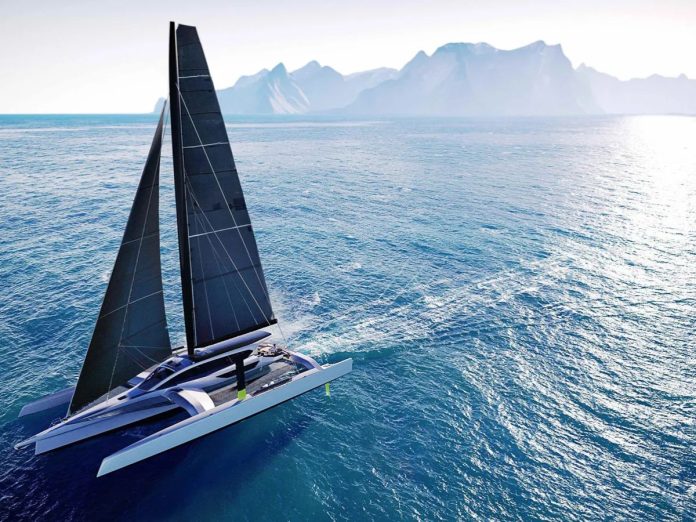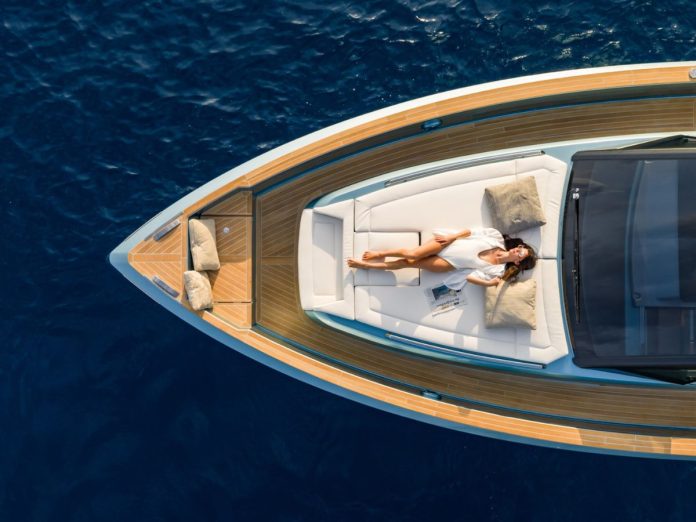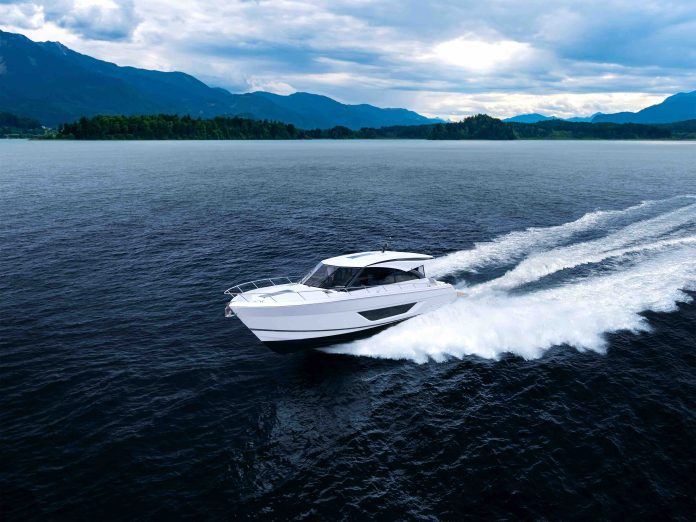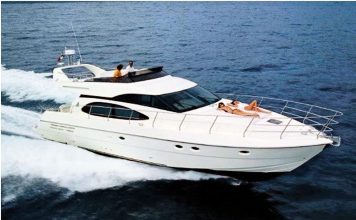The world’s largest cruising trimaran is being built from the same materials that lift Cup boats past 50 knots. What does that mean for tomorrow’s cruising multihulls?
A well-established material entering a new era
Carbon composite has shaped high-performance boatbuilding for decades. It is no longer new, yet its influence continues to grow. Modern production methods now allow builders to create it with remarkable accuracy. Prepreg fibres, controlled resin content, clean-room layups and large oven cures give designers the consistency they need to produce super-light structures at superyacht scale.
Fibreglass still rules the wider production market. At the performance end, though, carbon has become the standard. It sits at the heart of the world’s fastest racing platforms, and it defines Anahita, a 30.5 metre cruising trimaran built entirely from prepreg carbon.
Her design does not introduce a new material. It shows how far that material can go when builders apply grand prix knowledge to a luxury cruising platform.

Where we’ve already seen this approach in high-performance sailing
Look across today’s elite racing fleets and a clear pattern appears. Carbon composite is no longer an exotic option. It is the baseline for any boat that seeks high speeds, low weight and strong structural margins. SailGP’s F50s, America’s Cup AC75s and AC40s, the IMOCA 60s in the Vendée Globe, and the TP52, RC44 and International Moth classes all rely almost entirely on carbon.
Their hulls, decks, masts, foils and internal frames use advanced prepreg laminates cured at controlled temperatures. These structures survive loads that would destroy traditional materials. Without carbon, these boats could not fly, foil or withstand repeated shock loads offshore.
This thinking has spread into the top end of performance cruising. Brands such as HH Catamarans, Rapido, YYachts, Shogun and O Yachts now use extensive carbon construction to offer light, stiff platforms with high cruising speeds and low crew requirements.
Anahita fits into this evolution. She follows the structural logic seen in racing fleets but applies it to a 100-foot trimaran designed for fast, comfortable offshore sailing rather than competition.

Anahita: a racing platform reborn as a superyacht
Global Yacht Technology is building Anahita using moulds developed by CDK Technologies for an ocean-racing prototype. That link places her in the same design family as the Ultim multihulls. VPLP kept the long central hull and wide 18.4 metre beam that define high-performance trimarans, yet Jean-Jacques Coste’s interior points firmly toward long-range cruising.
Her full prepreg carbon structure, combined with a Nomex core, keeps displacement to about 28 tonnes. That figure is remarkable for a yacht of this length. The lightness, paired with a carbon rotating wing mast and efficient hull lines, is why she is expected to cruise in the mid-20 knot range and push into the 30s when conditions suit.
Anahita was not a racer retrofitted with comfort. She was engineered from the start as a performance platform capable of carrying a superyacht interior without losing pace.
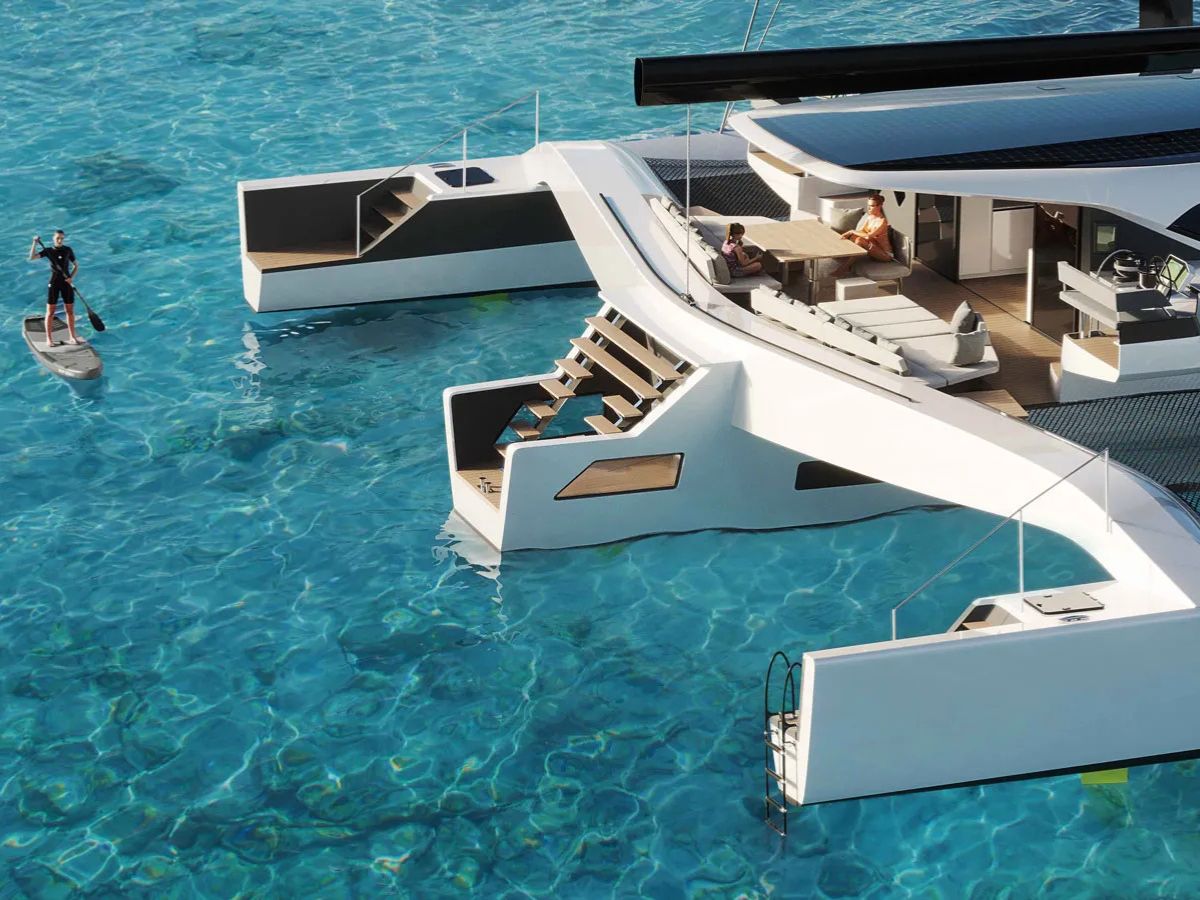
A deeper look inside Anahita
Anahita’s 30.5 metre hull is shaped for speed. The long waterline, the fine bow entries and the wide stance of her trimaran form speak to her racing heritage. With the boards raised she draws only 1.8 metres, which gives access to shallow anchorages. Lower the boards to 5.4 metres and she gains the grip needed for serious offshore passages.
Step aboard and the tone shifts. The forward master suite spans the full width of the central hull. Private access and large windows create a calm, bright space. Lightweight composite structures help reduce noise and vibration while keeping the yacht on its strict weight budget.
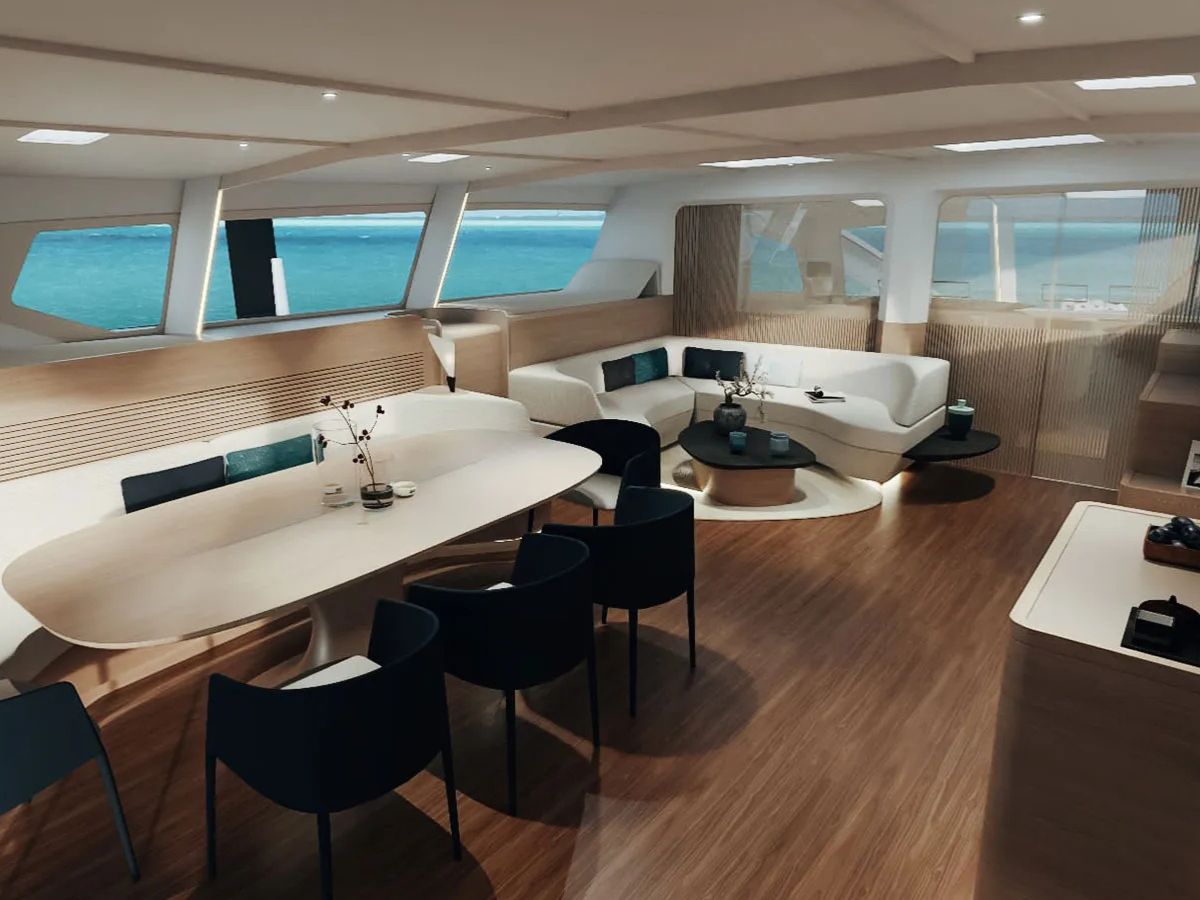
Guest cabins for six to eight people sit aft and midships. They are arranged for comfort on long voyages. Crew quarters sit apart to support extended offshore time. The main saloon runs across the central hull and uses a low-profile coachroof with wide glazing to offer clear, panoramic views without extra windage.
Aft, the cockpit becomes a protected outdoor living area. Seating and dining sit close to the centre of gravity to reduce pitching. The outboard floats hold storage and technical systems. These spaces sit low and wide, which improves stability and trim.
VPLP’s objective is clear. They aim to hold the hydrodynamic purity of a race trimaran while giving the owner the privacy and comfort expected from a modern 100-footer.
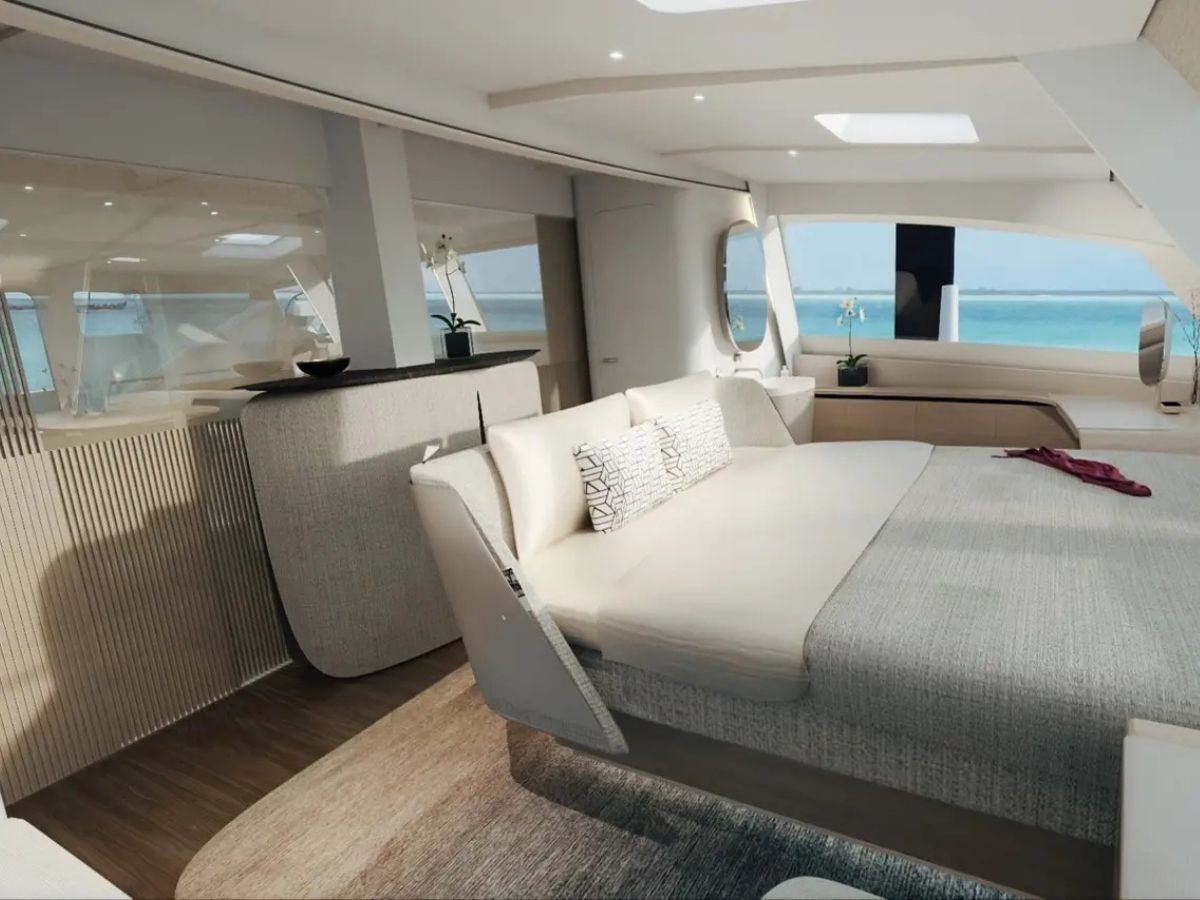
The project has already passed a major milestone, with the entire main hull now complete. Global Yacht Technology will move into full assembly in February as the amas, crossbeams and interior modules come together. Anahita is not intended as a high-volume series, and the builder plans only two to four sisterships after the launch boat. That small run will create a tight group of owners and allow the yard to offer more personalised support ashore and throughout each voyage. It also reinforces the yacht’s positioning as a rare, high-performance cruising trimaran rather than a broad-production model.
Why carbon composite gives multihulls such an advantage
Carbon composite engineering places the loads on the fibres, with resin acting as the binder. Add a lightweight Nomex or foam core and the result is a panel that is lighter, stiffer and stronger than metal. Prepreg carbon improves this even more by controlling resin ratios and creating uniform consolidation across the structure.
For large multihulls, these benefits are significant. Reduced weight increases speed and improves motion. Greater stiffness sharpens foil efficiency and reduces hull flex. Stronger structural margins allow designers to build wider beams, taller rigs and more ambitious hull shapes. Better weight placement lowers pitching and improves balance.
These advantages explain why performance trimarans and catamarans: ORMA 60s, Ultims, AC75s, AC40s and F50s, rely almost entirely on carbon composite construction.
New Zealand – the philosophy already exists
New Zealand yards have a long history with composite materials. To name a few:
- De Mey Yachts builds carbon raceboats and foiling platforms.
- Yachting Developments constructs custom carbon superyachts and carries out advanced composite refits.
- Even Wētā Marine, at the smaller end of the market, uses carbon and glass sandwich construction to deliver a stiff, responsive trimaran for recreational sailors.
The knowledge behind Anahita is well understood here. The difference lies in the scale, not the philosophy.
As three worlds collide
Anahita blurs the lines between three worlds that once felt separate: racing multihulls, cruising yachts and luxury superyachts. She proves that comfort and high performance can sit on the same platform when designers use carbon composite with discipline.
As the principles behind carbon composite multihulls continue to move into mainstream cruising: lighter structures, stiffer beams and smarter weight placement, owners will see faster passagemaking and better motion without losing liveability.
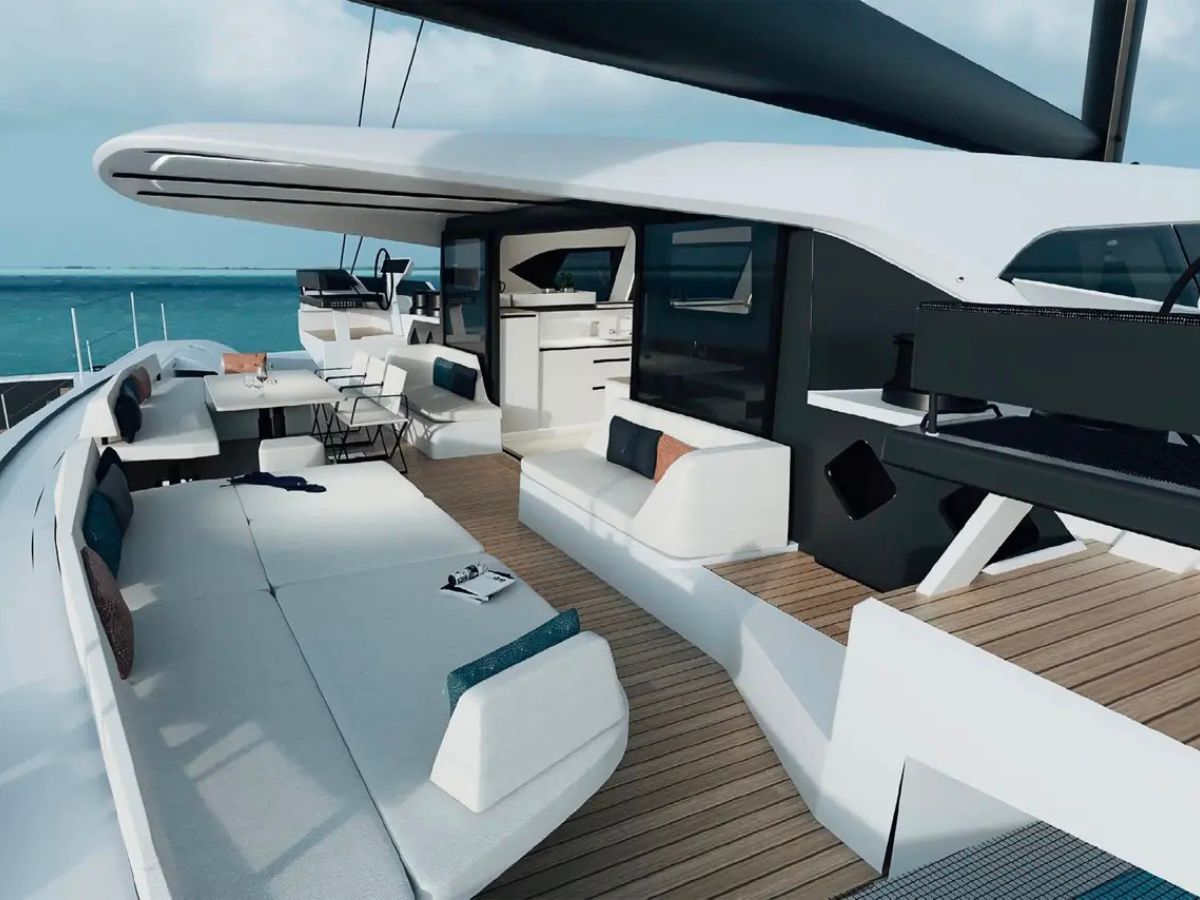
In time, boats shaped by Anahita’s approach may become the norm. We may look back on her as a turning point in how large cruising multihulls are built, sailed and imagined.








